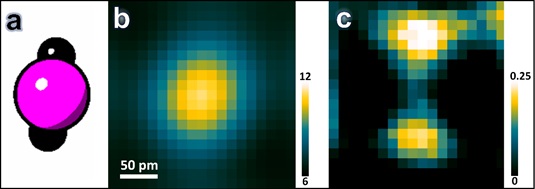Characterising oxygen atoms in perovskite and pyrochlore oxides using ADF-STEM at a resolution of a few tens of picometers
- Abstract number
- 1152
- Event
- European Microscopy Congress 2020
- DOI
- 10.22443/rms.emc2020.1152
- Corresponding Email
- [email protected]
- Session
- PSA.9 - Magnetic and Spintronic Materials
- Authors
- Dr. Ali Mostaed (2), Dr. Brant Walkley (1), Prof. Geetha Balakrishnan (3), Prof. Martin R Lees (3), Prof Ian M. Reaney (1), Prof. Derek C. Sinclair (1), Dr. Richard Beanland (3)
- Affiliations
-
1. Department of Materials Science and Engineering, University of Sheffield
2. Department of Materials, University of Oxford
3. Department of Physics, University of Warwick
- Keywords
Aberration-corrected STEM; Low-temperature magnetic behaviour; Oxygen; Perovskite; Pyrochlore
- Abstract text
Ceramic oxides with pyrochlore (A2B2O7) or perovskite (ABO3) structure exhibit a variety of interesting physical and electrical phenomena including magnetic, ferroelectric, dielectric, pyroelectric, piezoelectric and superconductive properties. Presence of microstructural defects, such as cation/oxygen vacancies and cation site swapping, can dramatically change the properties of these oxides. For instance, spin-ice A2B2O7 pyrochlore magnets containing such microstructural defects can exhibit unusual behaviours including spin-glass, and spin-liquid states, as well as magnetic configurations modified by quantum fluctuations [1]. Although the local structure of oxide materials can be investigated by aberration corrected scanning transmission electron microscopy (ac-STEM) with a sub-angstrom resolution, detecting light elements like oxygen in the presence of heavier elements in oxides is still challenging. The annular bright-field (ABF) technique has been widely used to reveal the position of oxygen in oxide materials, however, as the data obtained using this technique do not contain quantitative information, they are not reliable to study the site occupancy of oxygen in these materials. The annular dark-field (ADF) imaging technique, on the other hand, provides images of the atomic structure of materials in which the contrast of visible atom columns is related to the atomic number of their atoms, i.e. this technique provides quantitative information regarding the atomic structure of materials. However, oxygen atoms, especially in the presence of heavier elements in oxides, are invisible in the ADF images and therefore it seems that this technique could not provide any information regarding oxygen atoms in the structure. Here we use ac-STEM to study the atomic structure of pyrochlore (e.g. Yb2Ti2O7 and Pr2Zr2O7) and perovskite (e.g. LaFeO3) oxides and demonstrate that the detailed intensity distribution around the visible cation columns in ADF-STEM images is sensitive to the presence of their nearby invisible oxygen atoms. For instance, using this technique, we observe oxygen vacancies on Wyckoff 48f- and 8b-sites in Yb2Ti2O7 [1] and Pr2Zr2O7, respectively. The observed oxygen vacancies in these materials correlate with both their magnetic behaviour and measurements of their cations’ oxidation states using electron energy loss spectroscopy (EELS). We also show that invisible oxygen atoms have an influence on the shape of their nearby visible cation columns even when a high collection angle is used, i.e. using high angle annular dark-field (HAADF) imaging technique. Finally, we propose a method which can be used in certain circumstances to resolve the position of oxygen columns in ADF images. Using this method, we resolved the position of oxygen columns in [110] ADF images obtained from LaFeO3 (Fig. 1) and Yb2Ti2O7 where the distance between the oxygen columns and their nearby cation columns are just about 40 and 130 pm, respectively.
Figure 1. (a) Position of oxygen atoms (shown in black) around iron atom (shown in pink) in LaFeO3 viewed along [110] direction. (b) experimental ADF-STEM image of the Fe column in LaFeO3 viewed along [110] direction. (c) Oxygen columns around Fe column resolved from the ADF image shown in (b).
- References
[1] AMostaed, G Balakrishnan, M R Lees, Y Yasui, L J Chang and R Beanland, Physical Review B 95 (2017), 094431.

